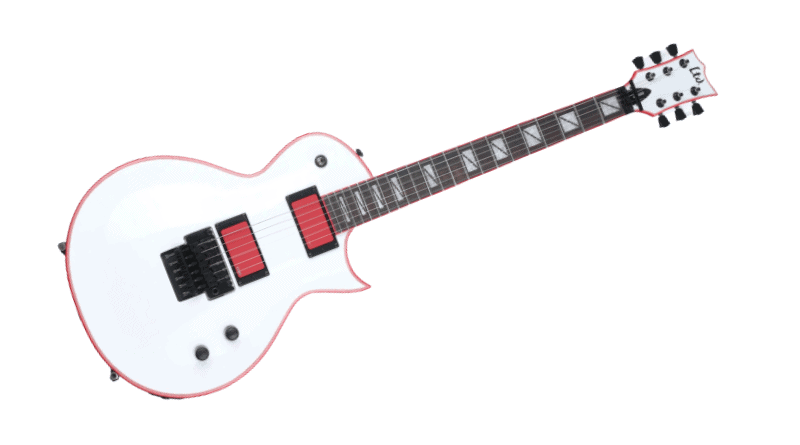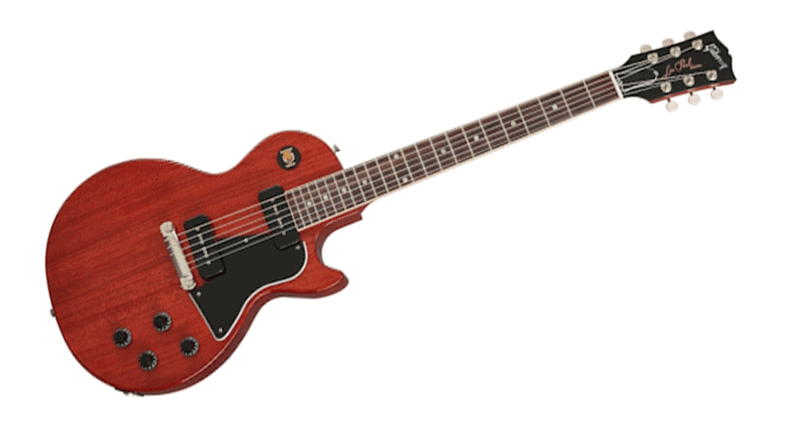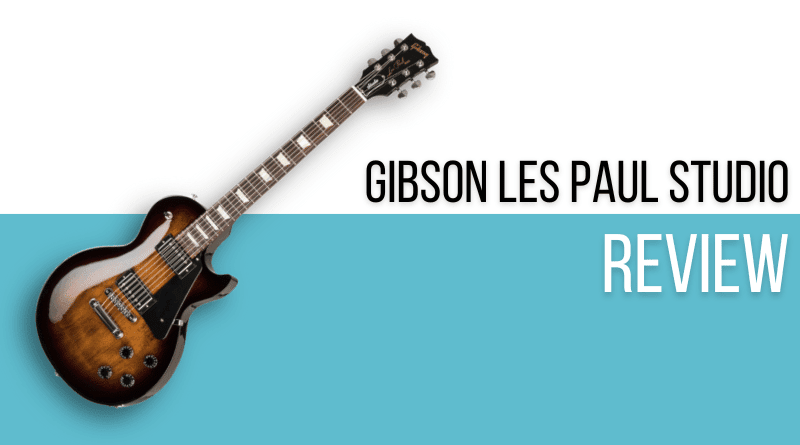In 1983, Gibson released the very first Gibson Les Paul Studio, a guitar designed to deliver all the tonal benefits and playability of a Les Paul Standard, but without the embellishments. This enabled them to keep the cost down and provide a more affordable guitar for players who wanted that thick LP sound, without the hefty price tag.
Even though there are dozens of versions of this iconic guitar, in our roundup of the best Les Paul Style guitars, we actually named the Gibson Les Paul Studio our Editor’s Choice.
In this KillerGuitarRigs Review, we’ll be going into depth on the LP Studio to explain exactly why this particular model was worthy of our highest honors. If you’ve been in the market for a Les Paul style guitar, you won’t want to miss this!
Read more about our review process.
Contents
Gibson Les Paul Studio: Who Is This For?
The Gibson Les Paul Studio is an absolute workhorse of a guitar that we think is best suited to intermediate and advanced players who are looking for a high-quality instrument that can handle a wide range of tones and playing styles.
It comes from the factory with stage- and studio-ready tones and playability. So whether you’re into metal, rock, country, blues, or jazz, the LP studio can do it all.
Appearance / Features / Controls
The LP Studio comes in a good range of finishes and considering this is supposed to be one of their lower-tier models, we think they come in some of the nicest colors in the whole range. Our test guitar came to us in Smokehouse Burst, which really looked great, but it’s also available in Ebony, Heritage Cherry Sunburst, Wine Red, and a Sweetwater Exclusive Bourbon Burst.
As with all Gibsons, it was made in the USA and came with a nitro finish. This will age naturally unlike the polyurethane finish you’d find on the Epiphone equivalents. This will eventually result in that sought after checked “relic” appearance.
The Studio has the traditional mahogany body topped with a carved maple cap. It wasn’t figured like you’d find on a Standard, but the wood grain still looked fantastic. And with the Smokehouse Burst finish, actually looked almost like it had a burled top.
Weight-wise, it came in at just a little over 8lb, which is about average for a modern Les Paul.
It had a mahogany SlimTaper ’60s neck, a gorgeous rosewood fretboard, and the frets themselves had been treated to a PLEK dressing. We hadn’t anticipated that the Studio would have PLEKd frets, so this was definitely a pleasant surprise.
Of course, as a Studio, there was no binding anywhere on the guitar, which meant no nibbing on the frets. Fortunately the PLEK treatment resulted in such a great finish, we didn’t miss having nibbed frets.
For electronics, it came with a pair of PAF-style pickups, with a 490R in the Neck and a 498T in the bridge. This is a tried and tested combo, and was perfectly suited to the Studio. For an even greater range of tones, the pickups were coil tapped, too.
Not to be confused with coil-splitting humbuckers, coil-tapping pickups like these can be set to use either the full pickup magnet or just part of it. This reduces the number of windings available, giving a lower output and a more vintage tone.
The hardware was of the typical high quality, including a Tune-O-Matic bridge and Grover Rotomatic Tuners. Besides that, it came with a nice vegan-leather hybrid gig bag for storage and transport.
Performance / Sound
As mentioned, we thought very highly of the Les Paul Studio. The overall feel was fantastic and it was very much a pro-level workhorse right out of the box.
Weight wasn’t an issue, thanks to the modern weight-relieved body. This solved one of the biggest complaints about Les Pauls in general and added significantly to the overall playing comfort.
The out-of-the-box setup was excellent, with a phenomenal low action. We found no fret buzz, nor was there any kind of choke out. It barely needed any pressure to fret a note, which made it incredibly easy-playing.
We loved the pickups. The 490R pickup in the neck position had a warm and smooth tone with a slightly lower output than the 498T pickup in the bridge position. The 498T had a brighter tone with much more bite and was perfect for lead lines.
Having coil tapping opened up some great tones that we’ve not found in other Les Paul models. When activated, it gave us some amazing vintage warmth – perfect for classic blues. Not quite original PAF, but certainly along those lines.
Other Guitars to Consider
We highly recommend the Gibson Les Paul Studio, but given how much of an investment it is, we do understand how important it can be to weigh up all your options first. For that reason, we’ve highlighted a couple of our favorite alternative options below.
ESP LTD Gary Holt GH-600

The ESP LTD Gary Holt GH-600 is a great choice for players who want the Les Paul look with an aggressive edge. It features an all-mahogany body for a thick and resonant tone, and a thin U-shaped neck profile for extreme speed. Its dual EMG active pickups give this Gary Moore Signature model an extremely high output, which results in amazing clarity, even with the gain at 11. And the Floyd Rose trem system delivers huge divebomb abilities while maintaining incredible tuning stability.
Gibson Les Paul Special

The Gibson Les Paul Special is an excellent alternative to the Studio. It still has the Les Paul mojo, but offers a completely different tone thanks to the mahogany slab body and twin P90 pickups. It’s a real punk weapon with its signature overdriven growl. At the same time, it can also serve up some gorgeous sparkling cleans. It may have been one of Gibson’s student-grade models originally, but today it’s a premium guitar with PLEKd frets, period-correct hand-wired electronics, and even Orange Drop capacitors for more consistent tone.
Final Thoughts on the Gibson Les Paul Studio
The Gibson Les Paul Studio really is an icon in the world of guitars. For decades, it’s been an affordable entry point into the (Gibson) Les Paul ecosystem, while still providing the classic LP tone that has truly helped to shape music as we know it today.
Especially if trim and embellishments aren’t a big deal for you, you could save upwards of $1,000 by opting for the Studio and still get the same end result. We absolutely love this guitar and we’re confident that you will, too.


